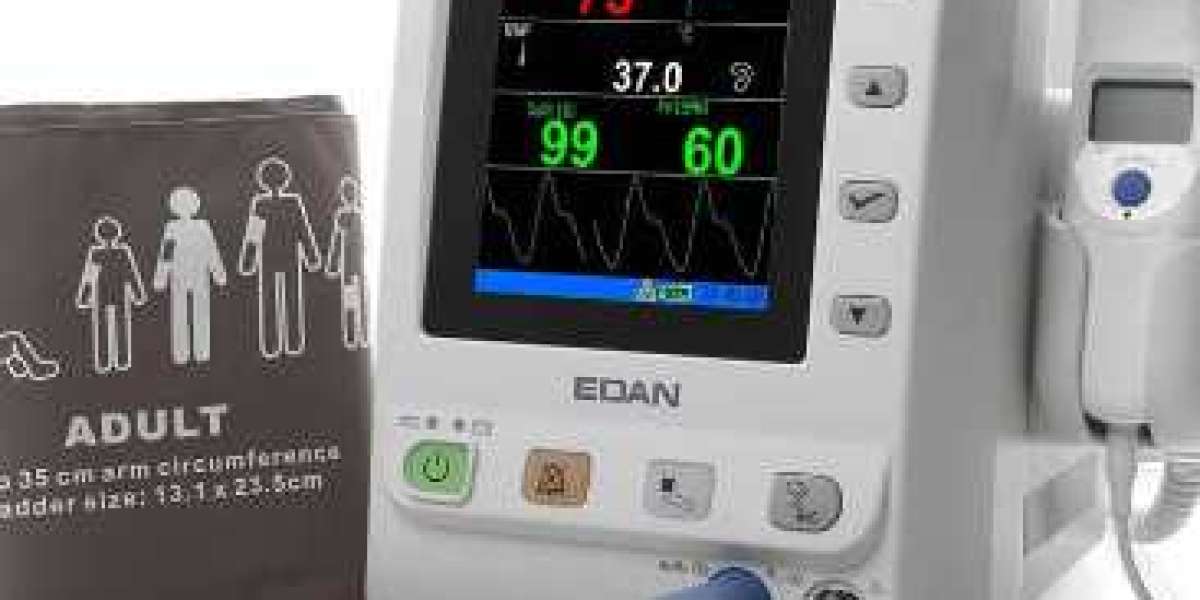Vital signs monitoring is a crucial aspect of healthcare. Doctors and nurses need to monitor their patients' vital signs, such as heart rate, blood pressure, and oxygen levels, to diagnose and treat medical conditions effectively. One of the key tools used in vital signs monitoring is a vital signs monitor. In this article, we will discuss what a vital signs monitor is, how it works, and why it matters.
What is a Vital Signs Monitor?
A vital signs monitor is a medical device that measures and displays a patient's vital signs, such as heart rate, blood pressure, oxygen saturation, and temperature. The device can be used to monitor patients in hospitals, clinics, ambulances, and homes.
Types of Vital Signs Monitors
There are two main types of vital signs monitors: portable and stationary.
Portable Vital Signs Monitor
Portable vital signs monitors are lightweight and easy to move around. They are commonly used in ambulances, clinics, and homes. Portable vital signs monitors are battery-powered and can be operated with one hand. They usually come with a built-in display and sensors for measuring different vital signs.
Stationary Vital Signs Monitor
Stationary vital signs monitors are larger and heavier than portable ones. They are usually used in hospitals and clinics. Stationary vital signs monitors are powered by electricity and are permanently installed in a room. They usually come with a separate display and sensors that are connected by cables.
Components of a Vital Signs Monitor
A vital signs monitor typically consists of four main components: a display, sensors, cables, and a power supply.
Display
The display is the part of the vital signs monitor that shows the patient's vital signs. The display can be either built-in or separate.
Sensors
The sensors are the part of the vital signs monitor that measures the patient's vital signs. There are different sensors for measuring different vital signs. For example, a pulse oximeter sensor is used to measure oxygen saturation, while a blood pressure cuff is used to measure blood pressure.
Cables
The cables connect the sensors to the display. They transmit the vital sign readings from the sensors to the display.
Power Supply
The power supply provides the energy needed to operate the vital signs monitor. Portable vital signs monitors are battery-powered, while stationary ones are powered by electricity.
How Does a Vital Signs Monitor Work?
A vital signs monitor works by using sensors to measure different vital signs. The readings are then transmitted to the display, where they are shown in real-time. Here's how a vital signs monitor measures some of the most important vital signs:
Measuring Heart Rate
To measure heart rate, a vital signs monitor uses a sensor called an electrocardiogram (ECG or EKG) sensor. The sensor is placed on the patient's chest, and it records the electrical activity of the heart. The readings are then displayed as a graph on the monitor, which shows the patient's heart rate and rhythm.
Measuring Blood Pressure
To measure blood pressure, a vital signs monitor uses a blood pressure cuff. The cuff is wrapped around the patient's arm and inflated to temporarily stop the flow of blood. The cuff then slowly deflates, and the monitor measures the pressure of the blood flowing through the artery. The readings are then displayed on the monitor as the patient's systolic and diastolic blood pressure.
Why is a Vital Signs Monitor Important?
A vital signs monitor is important because it allows doctors and nurses to monitor their patients' vital signs in real-time. By monitoring a patient's vital signs, healthcare providers can quickly detect any changes or abnormalities that could indicate a medical problem. For example, if a patient's blood pressure suddenly drops, it could indicate that they are going into shock, which requires immediate medical attention. Vital signs monitoring is also important for patients who are undergoing surgery, as it allows the medical team to closely monitor the patient's condition during and after the procedure.
Advantages and Disadvantages of Vital Signs Monitors
Like any medical device, there are both advantages and disadvantages to using a vital signs monitor.
Advantages
- Provides real-time monitoring of vital signs
- Can quickly detect any changes or abnormalities in a patient's condition
- Allows for prompt diagnosis and treatment of medical problems
- Can improve patient outcomes by ensuring timely intervention
Disadvantages
- Can be expensive to purchase and maintain
- Requires specialized training to use effectively
- Can sometimes produce inaccurate readings
- May cause discomfort or pain to the patient
Choosing a Vital Signs Monitor
When choosing a vital signs monitor, there are several factors to consider, such as the type of monitor, the number of vital signs it measures, and the cost. It's important to choose a monitor that is reliable, accurate, and easy to use.
Maintenance and Care of a Vital Signs Monitor
To ensure the accuracy and longevity of a vital signs monitor, it's important to properly maintain and care for it. This includes regular calibration, cleaning, and inspection of the sensors and cables.
Conclusion:
In conclusion, a vital signs monitor is a crucial tool in healthcare that allows doctors and nurses to monitor their patients' vital signs in real-time. By detecting any changes or abnormalities in a patient's condition, healthcare providers can quickly diagnose and treat medical problems, improving patient outcomes. When choosing a vital signs monitor, it's important to consider factors such as reliability, accuracy, and ease of use. Proper maintenance and care of the monitor can also help ensure its accuracy and longevity.







